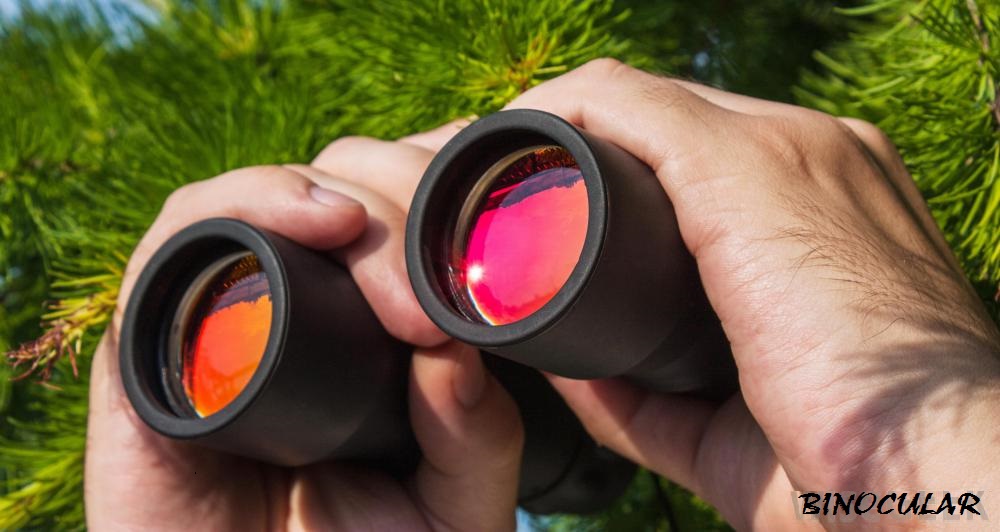A pair of binoculars is a device that serves the purpose of boosting visibility when viewing distant objects, with the history of the binocular going back 4 centuries
These are handheld normally with both hands and are aligned, so you view content in the same direction using both your eyes.
With this, you can focus on a given object among other objects without confusion while providing a three-dimensional image. While everything seems perfect to meet your needs and preferences currently, the history of binocular is far-fetched.

While they come in handy in various aspects of life, you will be amazed to know that the very first binocular was created back in the 17th century. During this time, binoculars came with a glass lens accompanied by Galilean optics.
These binoculars are characterized by a curved optic be it a mirror or a lens that is used to capture light which will, in turn, reflect on the object you are viewing. Together with an inverted eyepiece, you were able to receive an erect image that is upright. However, the downside of these binoculars is that they offer a narrow field of view and the magnification capabilities were very low.
Over the years, the features have changed with every new creation comes better and more pronounced features. After the Galilean binoculars came the binoculars with Keplerian optics. These provided better image vision with improved magnification. These binoculars provided an inverted image and different manufacturers designed different methods to turn the image, but even with these improvements, it didn’t stop here.
This then improved to mechanical designs and with these binoculars, one can create a point of focus from which you can then adjust to obtain a better view. With this design, the two major ways of providing a focus, the independent focus which allows you to adjust each eyepiece independently and central focus, which allows you to adjust both tubes together at the same time. This aimed at improving image stability and alignment.
Today’s market offers varying features and specifications for binoculars to meet the different needs and wants of different users. This said many might have a problem on how to choose a binocular. The brands and models in the current market are specific to their goals and objectives.
It is important you understand the specifications such as magnification, objective lens diameter, as well as the exit pupil. These key features will come in handy in narrowing down your search.
One must consider the binoculars size, which is determined by observing the objective lens size. There are three sizes which include full-size, mid-size, and compact. The full size provides for great lighting even in poor light conditions.
The images are very steady and have a wider field of view. These features are a favorite for birdwatchers and many of the best hunting binoculars lie under this category.
Mid-size on the other hand strikes a balance between light submission and image clarity making them ideal for both wildlife and sports use. The compact sizes are lightweight, and they are best recommended for outdoor daytime use as they will not function under dim lighting.
Another key consideration is the magnification power. This is indicated in the binoculars. When shopping, you will identify your binoculars by 2 numbers. The first number before the “x” symbol indicates the binocular’s magnification power.
An important aspect to consider is to create a balance, or you will end up with a pair of binoculars you cannot use. While they say the higher the magnification, the better, it is important to note that binoculars with more than 10 magnification can make steady viewing a challenge, as they tend to amplify your hand’s movement.
It is also important to consider the binocular exit pupil, which indicates how bright the image you are viewing will appear. The higher the number, the better but it is not necessary that you go for the highest if you will be using them during the day in the bright sun. This, therefore, goes hand in hand with the purpose of your binoculars.
With the advancement in technology, much more has been incorporated such as weatherproof and fog proof features, weather-resistant, as well as lens coating specifications. These added features have made it possible for users to use binoculars during all types of weather and in different environments.
Some of the best hunting binoculars are fog-proof allowing you to view your targets in the wee hours when visibility with your bare eyesight can be a challenge. While many used this pair of binoculars for sports and leisure activities, the added features are fulfilling the needs and preferences of hunters.
Since the invention of the first binoculars, it has developed into a tool that is a must-have for every home. They have become useful in different fields of life such as sports and leisure and there various additions and specifications help meet the different needs and preferences of different individuals.

They have advanced in the different materials that they are made from like the protective coverings, the magnification, field of view, as well as their objective lens diameter. Physically, they have also changed in the designs and shapes released over the years. While they initially started as heavy and bulky, they are now less cumbersome and lighter with the advancement in technology.
Currently, the market provides several binocular products. Other than their difference in features and specifications, they also come in different brands and models. The key objective is to meet the different needs and preferences of different individuals. In the initial stages, one binocular served several purposes with some under-performing.
Over the years, manufacturers have been able to diversify, and you can now get simple binoculars for beginners as well as complex and more detailed binoculars for the professional.
The bottom line is to understand the key features, match them to your needs, wants, and preferences and you will be able to settle for a pair of the best binoculars for hunting or any other purpose you wish to use your binocular for.
Leave a Reply